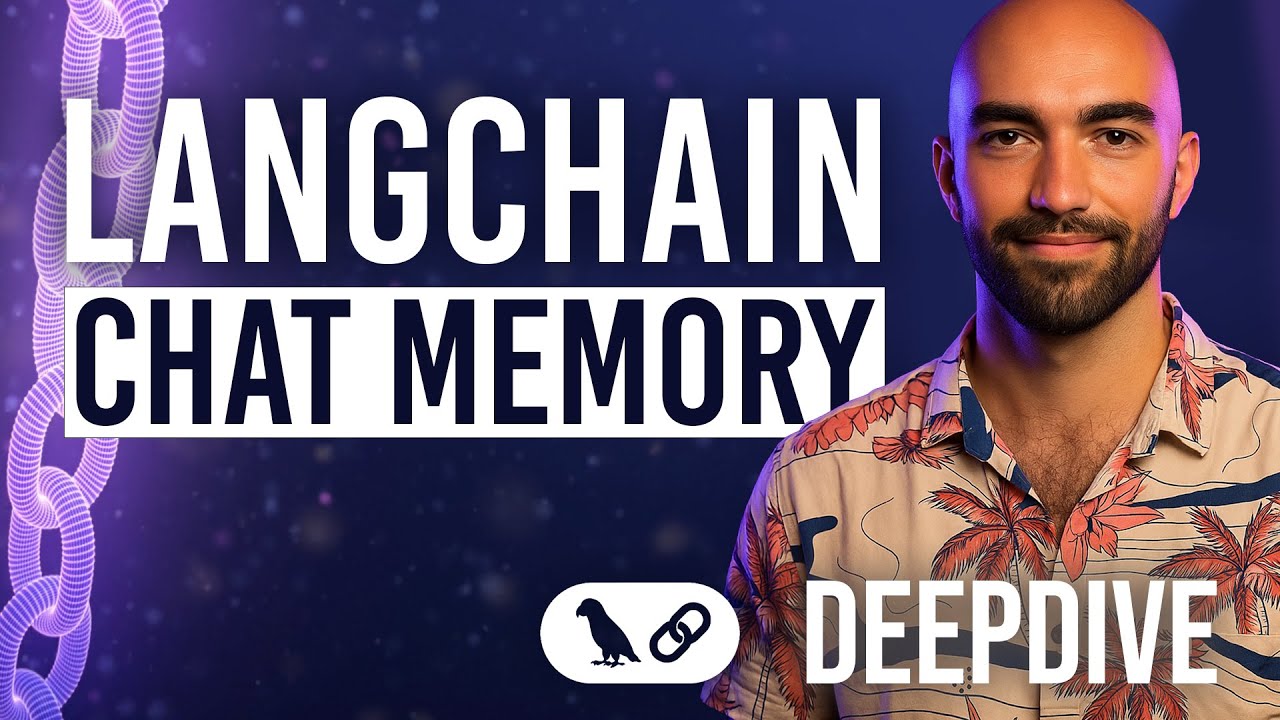The chapter explores four key types of conversational memory in LangChain—buffer, buffer window, summary, and summary buffer memory—highlighting their methods for managing conversation history to balance context retention and token efficiency. It also demonstrates how to implement these memories using the new LangChain 0.3 runnable with message history framework, enabling developers to build more flexible and context-aware chatbots.
In this chapter, the focus is on conversational memory in LangChain, a crucial component for chatbots and agents to remember previous interactions and maintain context throughout a conversation. The chapter begins by revisiting four core types of conversational memory: conversational buffer memory, conversational buffer window memory, conversational summary memory, and conversational summary buffer memory. Each type offers a different approach to storing and recalling past messages, ranging from storing all messages to summarizing and compressing conversation history to save tokens and manage context window limitations.
The conversational buffer memory is the simplest form, storing all messages in a list and returning them as needed, which works well for shorter conversations but can become costly and slow as conversations grow. The buffer window memory improves on this by only retaining the most recent K messages, reducing token usage and latency but potentially losing important earlier context. The chapter demonstrates how these older memory types were implemented in previous versions of LangChain and then shows how to rewrite them using the new “runnable with message history” approach in LangChain 0.3, which offers better integration and flexibility with the latest LangChain architecture.
Next, the chapter explores conversational summary memory, which compresses the conversation history into a concise summary using an LLM to reduce token usage while attempting to retain essential information. This approach is particularly useful for long conversations where storing every message would be impractical. The summary memory implementation involves generating a new summary each time new messages are added, replacing the previous history with this updated summary. The chapter also highlights the trade-offs between token savings and potential information loss, emphasizing the importance of prompt design to keep summaries concise yet informative.
The final memory type covered is the conversational summary buffer memory, which combines the benefits of buffer and summary memories. It keeps a buffer of recent messages up to a certain limit and summarizes older messages once the buffer exceeds that limit. This hybrid approach balances detailed recall of recent interactions with efficient compression of older context, helping to manage token limits and maintain relevant conversation history. The chapter walks through implementing this memory type with the new LangChain runnable framework, including configurable parameters for session management and buffer size, and discusses practical considerations for tuning the summarization process.
Overall, the chapter provides a comprehensive overview of conversational memory strategies in LangChain, demonstrating both legacy and modern implementations. It emphasizes the importance of conversational memory for creating truly conversational AI and shows how the new runnable with message history paradigm in LangChain 0.3 offers greater control and customization. By understanding and adapting these memory types, developers can build more efficient, context-aware chatbots and agents tailored to their specific application needs.
